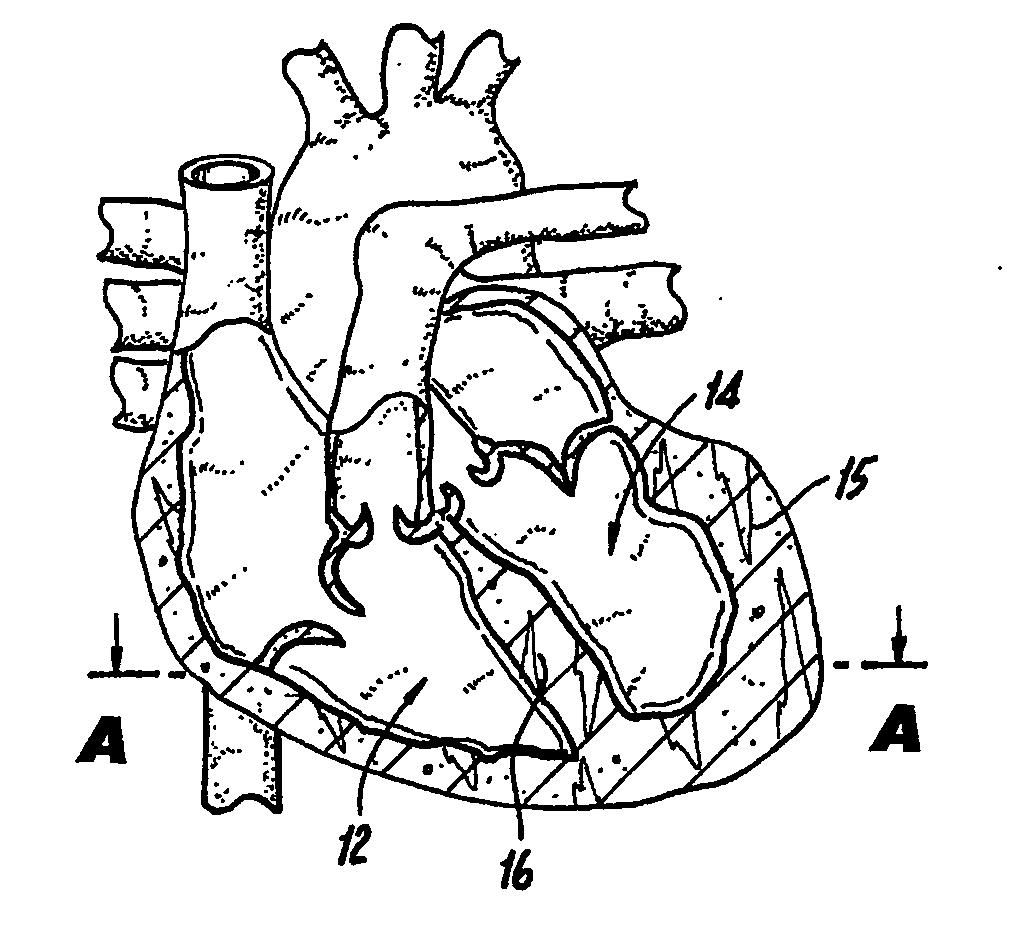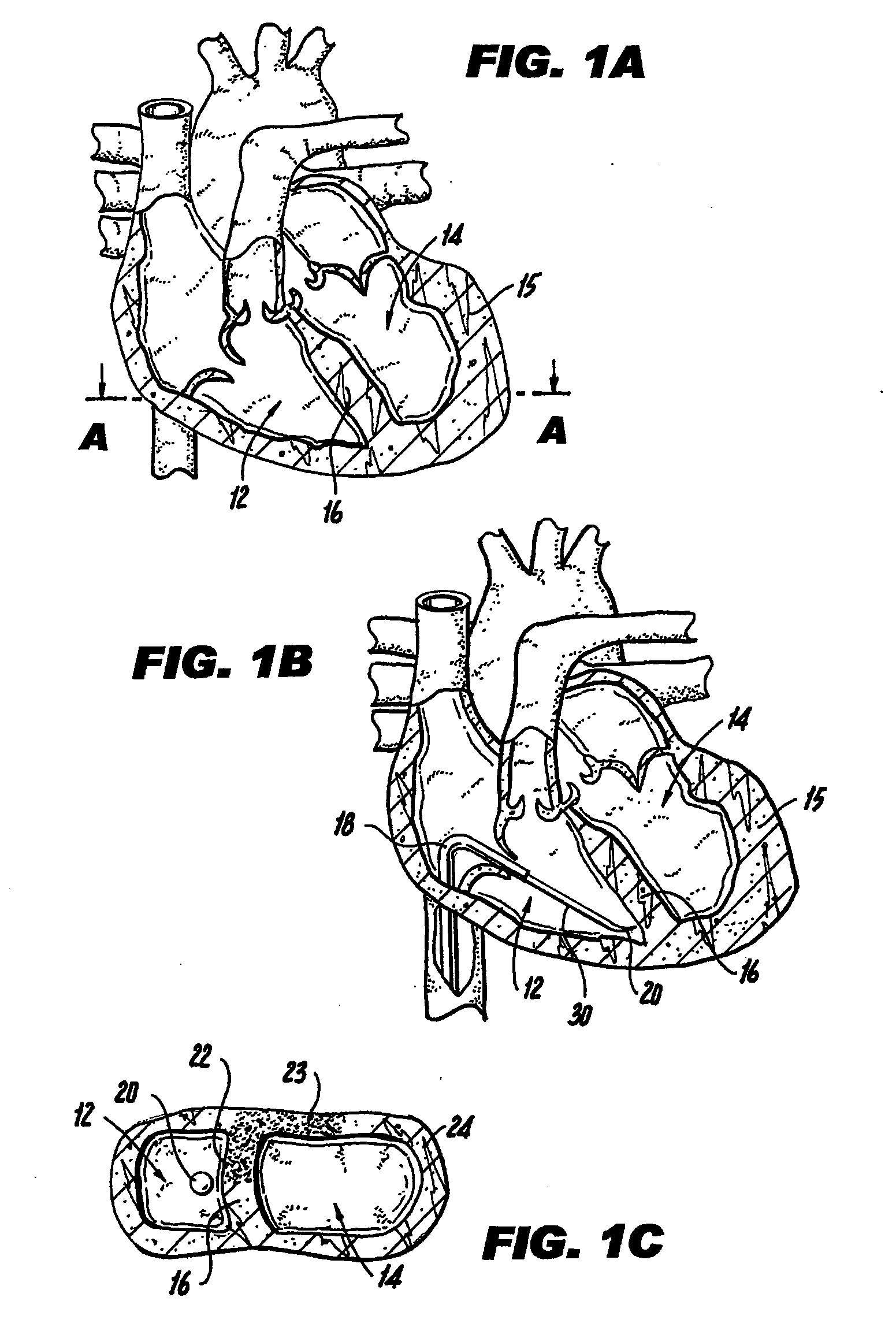Method and device for percutaneous left ventricular reconstruction
a left ventricular reconstruction and percutaneous technology, applied in the direction of prosthesis, catheter, therapy, etc., can solve the problems of back-up of pressure in the vascular system behind the ventricle, heart failure, and impaired pumping ability of the heart, so as to reduce the size and minimize the volume of the left ventricle
- Summary
- Abstract
- Description
- Claims
- Application Information
AI Technical Summary
Benefits of technology
Problems solved by technology
Method used
Image
Examples
Embodiment Construction
[0041]FIG. 1A illustrates a mammalian heart 10 and identifies the right ventricle 12, left ventricle 14, left ventricle wall 15 and septum 16. Right ventricle 12 may also be referred to interchangeably herein and in the figures as “RV”. Left ventricle 14 may also be referred to interchangeably herein and in the figures as “LV”. Additionally, left ventricle 14 is also referred to herein as “left ventricle chamber.”
[0042]FIGS. 1A-1C and 2A-2C illustrate a method of percutaneously accomplishing left ventricular restoration (“LVR”). In accordance with this method, a catheter 18 with a sensing element 20 is threaded through the femoral vein (not shown) into the right ventricle 12 of heart 10. It is to be understood that the invention is not limited to insertion of catheter 18 via the femoral vein and catheter 18 may be inserted via other arteries or veins. The sensing element 20 locates the infarcted tissue 22 of the interventricular septum 16. A commercially available device (EP Technol...
PUM
 Login to View More
Login to View More Abstract
Description
Claims
Application Information
 Login to View More
Login to View More - R&D
- Intellectual Property
- Life Sciences
- Materials
- Tech Scout
- Unparalleled Data Quality
- Higher Quality Content
- 60% Fewer Hallucinations
Browse by: Latest US Patents, China's latest patents, Technical Efficacy Thesaurus, Application Domain, Technology Topic, Popular Technical Reports.
© 2025 PatSnap. All rights reserved.Legal|Privacy policy|Modern Slavery Act Transparency Statement|Sitemap|About US| Contact US: help@patsnap.com



